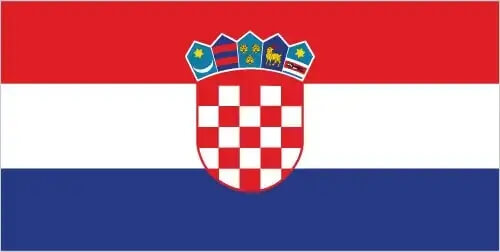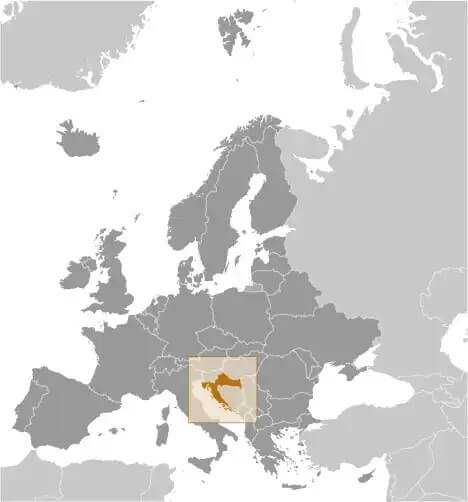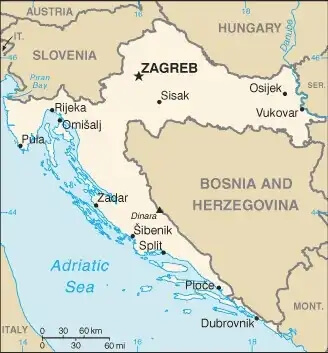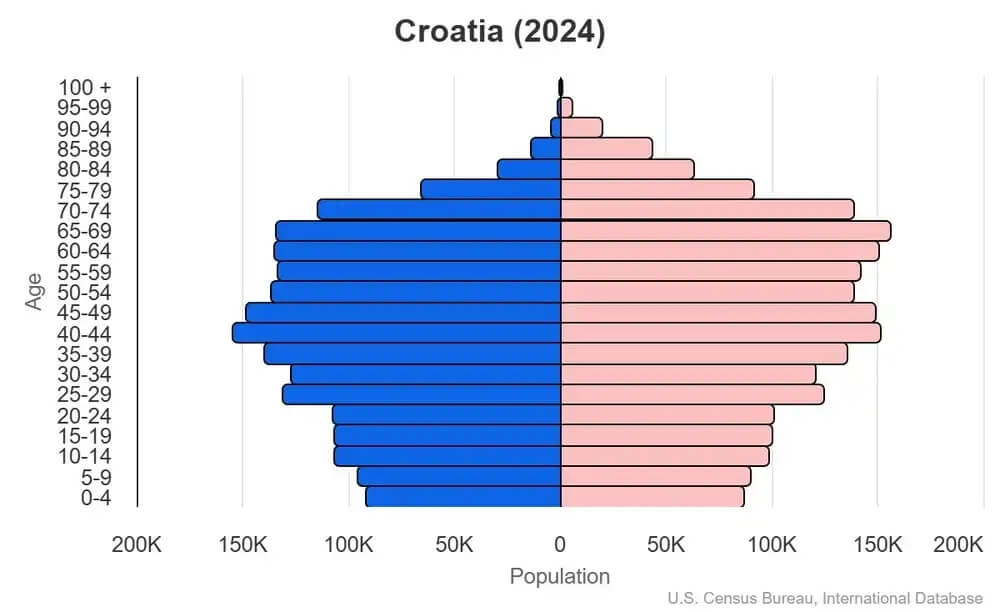World Book
Croatia
World Book Index
79


With a score of 79, the country is ranked 21st out of 158 countries in the World Book ranking. (more information)
Introduction
Background
The lands that today comprise Croatia were part of the Austro-Hungarian Empire until the close of World War I. In 1918, the Croats, Serbs, and Slovenes formed a kingdom known after 1929 as Yugoslavia. Croatia declared its independence from Yugoslavia in 1991, although it took four years of sporadic but often bitter fighting to expel Yugoslav forces.
Geography
Area
total : 56,594 sq km
land: 55,974 sq km
water: 620 sq km
Climate
Mediterranean and continental; continental climate predominant with hot summers and cold winters; mild winters, dry summers along coast
Natural resources
oil, some coal, bauxite, low-grade iron ore, calcium, gypsum, natural asphalt, silica, mica, clays, salt, hydropower
People and Society
Population
total: 4,150,116 (2024 est.)
Ethnic groups
Croat 91.6%, Serb 3.2%, other 3.9% (including Bosniak, Romani, Albanian, Italian, and Hungarian), unspecified 1.3% (2021 est.)
Languages
Croatian (official) 95.2%, Serbian 1.2%, other 3.1% (including Bosnian, Romani, Albanian, and Italian) unspecified 0.5% (2021 est.)
Religions
Roman Catholic 79%, Orthodox 3.3%, Protestant 0.3%, other Christian 4.8%, Muslim 1.3%, other 1.1%, agnostic 1.7%, none or atheist 4.7%, unspecified 3.9% (2021 est.)
Population growth rate
-0.46% (2024 est.)
Government
Government type
parliamentary republic
Capital
name: Zagreb
Executive branch
chief of state: President Zoran MILANOVIC (since 18 February 2020)
head of government: Prime Minister Andrej PLENKOVIC (since 19 October 2016)
Diplomatic representation in the US
chief of mission: Ambassador Pjer ŠIMUNOVIĆ (since 8 September 2017)
Diplomatic representation from the US
chief of mission: Ambassador (vacant); Chargé d'Affaires Trey LYONS (since January 2025)
Economy
Economic overview
upper-middle-income Balkan economy; newest euro user (introduced in 2023); increased investments from EU structural funds and tourism sector contributing to strong but moderating economic growth; declining energy prices and restrictive monetary policy easing inflation; historically low unemployment rate with labor shortages within services and manufacturing sectors
Real GDP (purchasing power parity)
$164.825 billion (2024 est.)
$158.769 billion (2023 est.)
$153.693 billion (2022 est.)
Real GDP per capita
$42,600 (2024 est.)
$41,100 (2023 est.)
$39,900 (2022 est.)
Exports
$46.601 billion (2024 est.)
$45.064 billion (2023 est.)
$41.907 billion (2022 est.)
Exports - partners
Italy 14%, Germany 11%, Slovenia 11%, Bosnia & Herzegovina 6%, Austria 6% (2023)
Exports - commodities
ships, garments, electricity, packaged medicine, wood (2023)
Imports
$49.86 billion (2024 est.)
$46.811 billion (2023 est.)
$46.769 billion (2022 est.)
Imports - partners
Italy 14%, Germany 14%, Slovenia 11%, Hungary 6%, Austria 5% (2023)
Imports - commodities
refined petroleum, cars, garments, natural gas, crude petroleum (2023)
Human Development Index
The country's Human Development Index (HDI) is 0.889, ranking it 41st out of 193 countries tested. (more information)
World Happiness Report
The World Happiness Report ranked the country 14th out of 158 countries tested with a score of 6.951. (more information)



